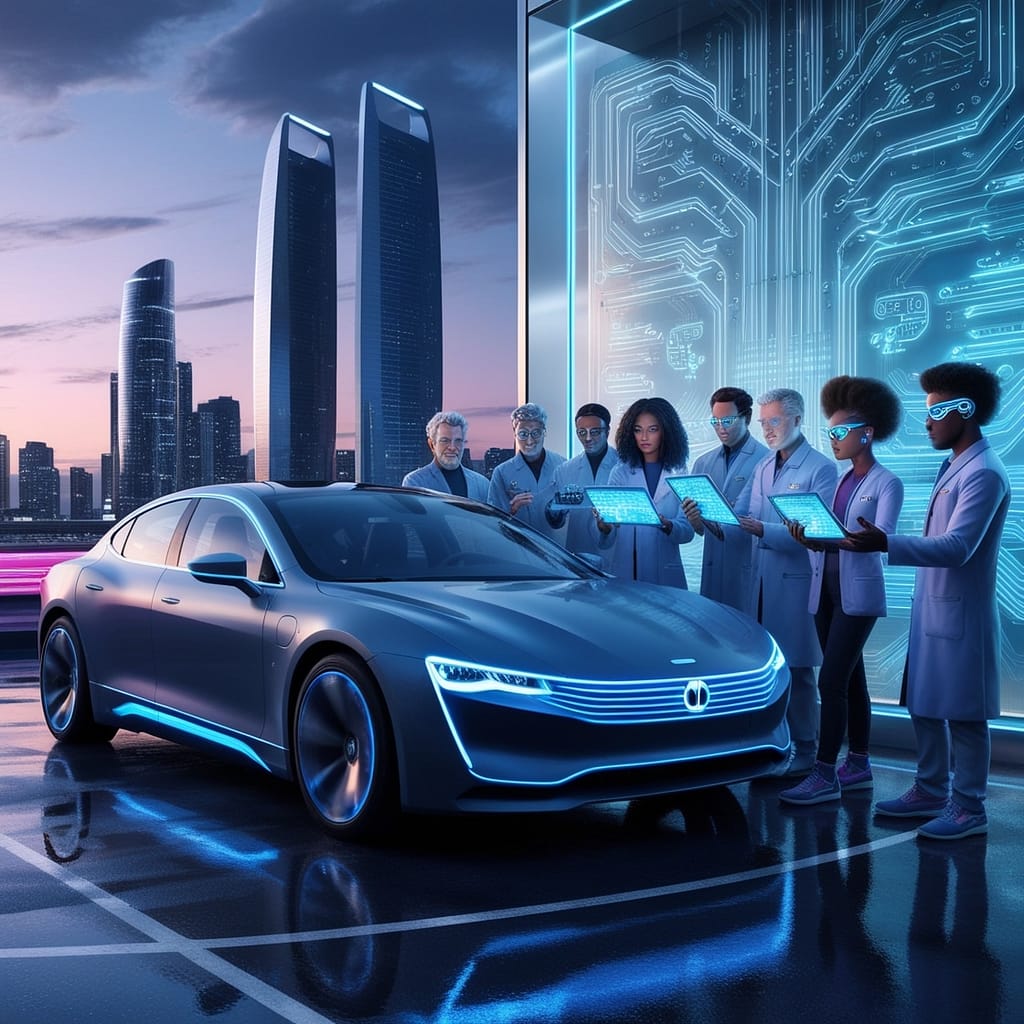In recent years, the fusion of Artificial Intelligence (AI) with autonomous vehicles has revolutionized the landscape of transportation, promising safer roads, increased efficiency, and reduced environmental impact. This convergence of cutting-edge technology has the potential to reshape how we move from one place to another, paving the way for a future where self-driving cars are not just a novelty but a mainstream reality.
The Evolution of Autonomous Vehicles
Autonomous vehicles, once a dream confined to science fiction, are now tangible products of relentless technological innovation and AI integration. The progression from basic driver-assist features to fully autonomous systems has been marked by significant advancements in machine learning, computer vision, sensor technology, and predictive analytics.
Machine learning algorithms lie at the heart of autonomous vehicle operations, allowing cars to adapt and learn from real-world data to make split-second decisions on the road. This learning process enables vehicles to navigate complex environments, anticipate potential hazards, and interact seamlessly with other drivers and pedestrians.
Enhancing Safety and Reducing Accidents
One of the primary promises of autonomous vehicles is their potential to drastically reduce traffic accidents and fatalities. AI-powered systems can analyze vast amounts of data from sensors, cameras, and radar to detect and respond to potential dangers quicker and more effectively than human drivers. By eliminating human error, which accounts for a significant portion of road accidents, autonomous vehicles have the capacity to make roads safer for everyone.
Furthermore, AI advancements enable vehicles to communicate with each other in real-time, enhancing coordination and reducing the likelihood of collisions. This interconnected network of self-driving cars can optimize traffic flow, minimize congestion, and ultimately lead to a more efficient transportation system.
Environmental Impact and Efficiency
Beyond safety improvements, autonomous vehicles also hold the promise of reducing environmental impact and enhancing transportation efficiency. By optimizing routes, reducing idling time, and implementing eco-friendly driving patterns, AI-driven vehicles can contribute to lowering emissions and conserving fuel. Additionally, autonomous ridesharing services can lead to a reduction in the overall number of vehicles on the road, further decreasing traffic congestion and environmental pollution.
Regulatory Challenges and Ethical Considerations
While the potential benefits of AI-driven autonomous vehicles are undeniable, their widespread adoption faces regulatory challenges and ethical considerations. Issues like liability in the event of accidents, data privacy concerns, and the ethical implications of AI decision-making in life-or-death situations require thoughtful consideration and robust regulatory frameworks to address.
Regulators, policymakers, and industry leaders must collaborate to establish comprehensive guidelines that ensure the safe deployment and ethical use of autonomous vehicle technology. Striking a balance between innovation and safety is paramount to the successful integration of AI advancements in the future of transportation.

The Road Ahead: Embracing a Driverless Future
As AI continues to advance and autonomous vehicle technology matures, the transportation industry stands on the cusp of a transformative era. The vision of a driverless future, once confined to imagination, is now within reach, promising a transportation ecosystem that is safer, more efficient, and environmentally sustainable.
Embracing AI advancements in autonomous vehicles requires a multidisciplinary approach that encompasses technological innovation, regulatory oversight, and societal acceptance. By navigating the complexities and challenges inherent in this paradigm shift, we can unlock the full potential of autonomous vehicles and shape a future where transportation is not just a means of getting from point A to point B but a seamless, interconnected experience powered by Artificial Intelligence.
In conclusion, AI advancements in autonomous vehicles are propelling us towards a future where mobility is redefined, safety is paramount, and sustainability is a core tenet of transportation systems. By embracing these advancements and collectively steering towards a driverless horizon, we have the opportunity to reshape how we perceive and engage with transportation, ushering in a new era of mobility that transcends traditional boundaries and unlocks unparalleled possibilities for the future.



